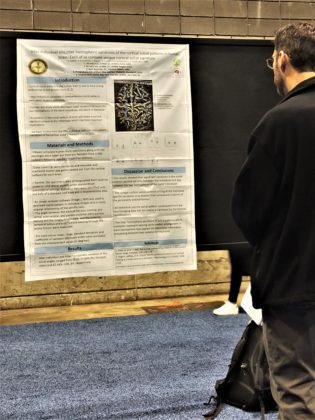- Home
- Editorial
- News
- Practice Guidelines
- Anesthesiology Guidelines
- Cancer Guidelines
- Cardiac Sciences Guidelines
- Critical Care Guidelines
- Dentistry Guidelines
- Dermatology Guidelines
- Diabetes and Endo Guidelines
- Diagnostics Guidelines
- ENT Guidelines
- Featured Practice Guidelines
- Gastroenterology Guidelines
- Geriatrics Guidelines
- Medicine Guidelines
- Nephrology Guidelines
- Neurosciences Guidelines
- Obs and Gynae Guidelines
- Ophthalmology Guidelines
- Orthopaedics Guidelines
- Paediatrics Guidelines
- Psychiatry Guidelines
- Pulmonology Guidelines
- Radiology Guidelines
- Surgery Guidelines
- Urology Guidelines
Researchers propose a human ‘Brain print’ for forensic identification

Everyone would be familiar with ‘Finger Print’ and its potential role in the forensic identification of the individuals. Now a team of Anatomy and neuroscience researchers from AIIMS, Patna, National Brain Research Centre, Manesar, India, PGI, Chandigarh, and Langone medical center, NYU, New York, USA have proposed a ‘Brain Print’ for the forensic identification of the individuals.
They have presented their research on the second day of the 50 th anniversary of the prestigious international neuroscience conference SFN 2019 being held at Chicago, USA (19-23 rd Oct). SFN is conducted each year by the largest international body of neuroscientists—Society For Neuroscience and is attended by thousands of the neuroscientists.
Each of us has a unique brain, a fact, which is reflected in the neural wiring of the brain. The unique neural wiring raises a specific pattern of elevations and depression (Gyri and Sulci) on the cortical surface of the brain. Though, the individual-specific variations in the cortical sulci (and gyri) are known, not enough research has been done on their composite pattern. “We propose that the unique cortical pattern of the human brain can be used for forensic identification of the individuals where other methods have failed to detect identity. The unique cortical pattern (or signature) which we call ‘Brain print’ can be constructed from the CT or MRI Scans of the living individuals and the exact brain specimens can be printed with the 3D printer. CT and MRI scans are now commonly done for the individuals visiting neurology and neurotrauma departments, we can create and exploit that database for this purpose” said Dr. Ashutosh Kumar, Assistant Professor at Department of Anatomy, AIIMS, Patna who is representing the team at SFN, 2019.
“Until now, we have used real human brains from dead individuals (preserved with formalin) to detect the unique cortical signature using digital image analysis but we are to use further CT and MRI data from the living individuals for this purpose” further elaborated Dr. Kumar.

A visitor looking at The ‘Brain print’ poster presented at SFN, 2019, Chicago, USA.

Disclaimer: This site is primarily intended for healthcare professionals. Any content/information on this website does not replace the advice of medical and/or health professionals and should not be construed as medical/diagnostic advice/endorsement or prescription. Use of this site is subject to our terms of use, privacy policy, advertisement policy. © 2020 Minerva Medical Treatment Pvt Ltd